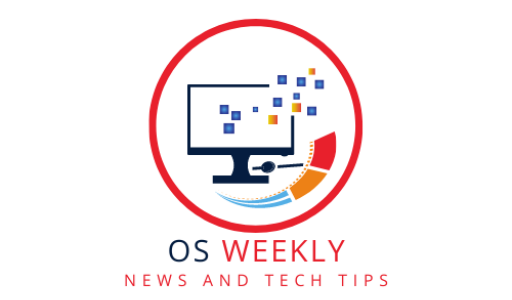Operating systems (OS) are the fundamental software that manages and controls computer hardware, allowing users to interact with computers and run applications. Understanding the different types of operating systems is crucial for both technical enthusiasts and everyday users. In this article, we will explore various operating system architectures, their unique features, and their roles in different computing environments.
1. Introduction
Operating systems serve as the bridge between users and computer hardware, providing an interface for executing programs and managing system resources. They come in different forms, each designed to address specific needs and requirements. Let’s delve into the world of operating systems and discover their diversity.
2. Monolithic Operating Systems
Monolithic operating systems are characterized by a single, large kernel that handles all system functions, including device drivers, file systems, and memory management. Examples of monolithic operating systems include Linux and Windows. While they offer efficiency due to their direct access to hardware, they can be prone to stability issues.
3. Microkernel Operating Systems
Microkernel operating systems employ a minimalistic approach by placing only essential functionalities in the kernel, while moving other services to separate user-space processes. This architecture enhances stability and allows for easier extensibility. Examples of microkernel-based operating systems include QNX and Minix.
4. Hybrid Operating Systems
Hybrid operating systems combine features of both monolithic and microkernel architectures. They retain a small kernel with critical functionalities while incorporating additional services as separate modules. This approach offers flexibility and performance optimization. Mac OS X, with its XNU kernel, is a notable example of a hybrid operating system.
5. Network Operating Systems
Network operating systems focus on managing and coordinating resources in distributed computing environments. They enable multiple computers to communicate, share files, and access common resources. Novell NetWare and Windows Server are widely used network operating systems.
6. Real-Time Operating Systems (RTOS)
Real-time operating systems (RTOS) are designed for systems that require precise timing and quick response to events. They are employed in critical applications such as aerospace, industrial automation, and medical devices. RTOS can be further classified as hard real-time or soft real-time, depending on the severity of time constraints.
7. Mobile Operating Systems
Mobile operating systems power smartphones, tablets, and other mobile devices. They provide a user-friendly interface, app ecosystem, and specialized features like touch input and location services. Prominent examples include Android and iOS, each offering distinct user experiences and app compatibility.
8. Embedded Operating Systems
Embedded operating systems are tailored for specific hardware platforms and embedded devices. They prioritize efficiency, real-time capabilities, and stability. Embedded OSs find applications in various domains, from automotive systems to consumer electronics. Examples include FreeRTOS and VxWorks.
9. Web-based Operating Systems
Web-based operating systems leverage web technologies to provide users with a computing environment accessible through a web browser. These OSs allow for cloud-based storage, online collaboration, and streamlined software updates. While they offer convenience, their functionality may be limited without an internet connection.
10. Virtualization and Containerization
Virtualization and containerization technologies have transformed the way operating systems are utilized. Virtualization enables running multiple OSs on a single physical machine, while containerization allows for isolated and lightweight execution of applications. These technologies enhance resource utilization and simplify software deployment.
11. Operating Systems for Specialized Purposes
Certain industries and fields require operating systems tailored to their specific needs. For instance, gaming consoles have their own OSs optimized for delivering immersive gaming experiences, while aviation relies on specialized operating systems for critical flight systems. These operating systems integrate unique features and optimizations relevant to their respective domains.
12. Operating System Security
Operating system security is of paramount importance to protect against threats and vulnerabilities. Robust security measures, including access controls, encryption, and regular updates, are crucial for ensuring system integrity and protecting user data.
13. Interoperability and Compatibility
Interoperability refers to the ability of different operating systems to work together seamlessly. Achieving compatibility between diverse OSs can be challenging due to differences in file formats, protocols, and software dependencies. However, various technologies and standards have been developed to facilitate interoperability and enable cross-platform collaboration.
14. Future Trends and Developments
The world of operating systems is ever-evolving, with new technologies and trends shaping their future. Advancements in artificial intelligence, edge computing, and quantum computing will likely influence the design and capabilities of operating systems. It will be fascinating to witness the innovative solutions that emerge in the years to come.
15. Conclusion
In conclusion, operating systems play a crucial role in modern computing environments, providing a platform for software execution and resource management. By understanding the different types of operating systems available, users can make informed decisions based on their specific needs and requirements. Whether it’s a monolithic OS, a microkernel architecture, or a specialized operating system for a particular field, each type offers unique features and advantages. Stay informed about the latest developments in operating systems to navigate the digital landscape effectively.
Frequently Asked Questions
- What is the purpose of an operating system?
- An operating system manages computer hardware and provides a user interface for running applications.
- What are the different types of operating systems?
- There are various types of operating systems, including monolithic, microkernel, hybrid, network, real-time, mobile, embedded, web-based, and specialized operating systems.
- Which operating system is best for mobile devices?
- Android and iOS are the most popular operating systems for mobile devices, each offering unique features and a wide range of apps.
- How does virtualization impact operating systems?
- Virtualization allows multiple operating systems to run on a single physical machine, enhancing resource utilization and facilitating efficient software deployment.
- How important is operating system security?
- Operating system security is crucial for protecting against threats and vulnerabilities, ensuring system integrity, and safeguarding user data.

